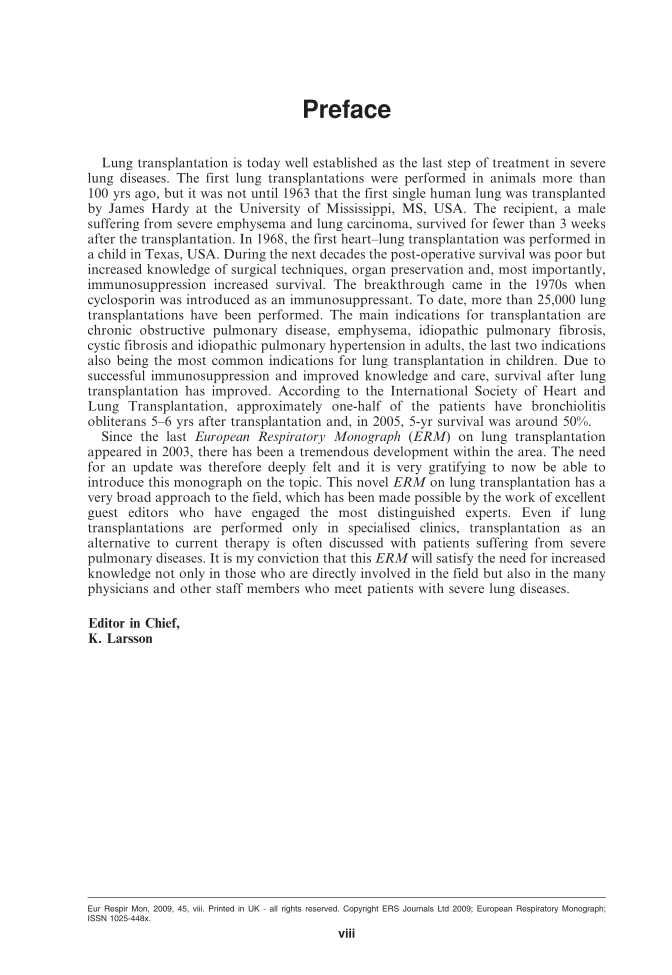Preface Lung transplantation is today well established as the last step of treatment in severe lung diseases. The first lung transplantations were performed in animals more than 100 yrs ago, but it was not until 1963 that the first single human lung was transplanted by James Hardy at the University of Mississippi, MS, USA. The recipient, a male suffering from severe emphysema and lung carcinoma, survived for fewer than 3 weeks after the transplantation. In 1968, the first heart–lung transplantation was performed in a child in Texas, USA. During the next decades the post-operative survival was poor but increased knowledge of surgical techniques, organ preservation and, most importantly, immunosuppression increased survival. The breakthrough came in the 1970s when cyclosporin was introduced as an immunosuppressant. To date, more than 25,000 lung transplantations have been performed. The main indications for transplantation are chronic obstructive pulmonary disease, emphysema, idiopathic pulmonary fibrosis, cystic fibrosis and idiopathic pulmonary hypertension in adults, the last two indications also being the most common indications for lung transplantation in children. Due to successful immunosuppression and improved knowledge and care, survival after lung transplantation has improved. According to the International Society of Heart and Lung Transplantation, approximately one-half of the patients have bronchiolitis obliterans 5–6 yrs after transplantation and, in 2005, 5-yr survival was around 50%. Since the last European Respiratory Monograph (ERM) on lung transplantation appeared in 2003, there has been a tremendous development within the area. The need for an update was therefore deeply felt and it is very gratifying to now be able to introduce this monograph on the topic. This novel ERM on lung transplantation has a very broad approach to the field, which has been made possible by the work of excellent guest editors who have engaged the most distinguished experts. Even if lung transplantations are performed only in specialised clinics, transplantation as an alternative to current therapy is often discussed with patients suffering from severe pulmonary diseases. It is my conviction that this ERM will satisfy the need for increased knowledge not only in those who are directly involved in the field but also in the many physicians and other staff members who meet patients with severe lung diseases. Editor in Chief, K. Larsson Eur Respir Mon, 2009, 45, viii. Printed in UK -all rights reserved. Copyright ERS Journals Ltd 2009 European Respiratory Monograph ISSN 1025-448x. viii
